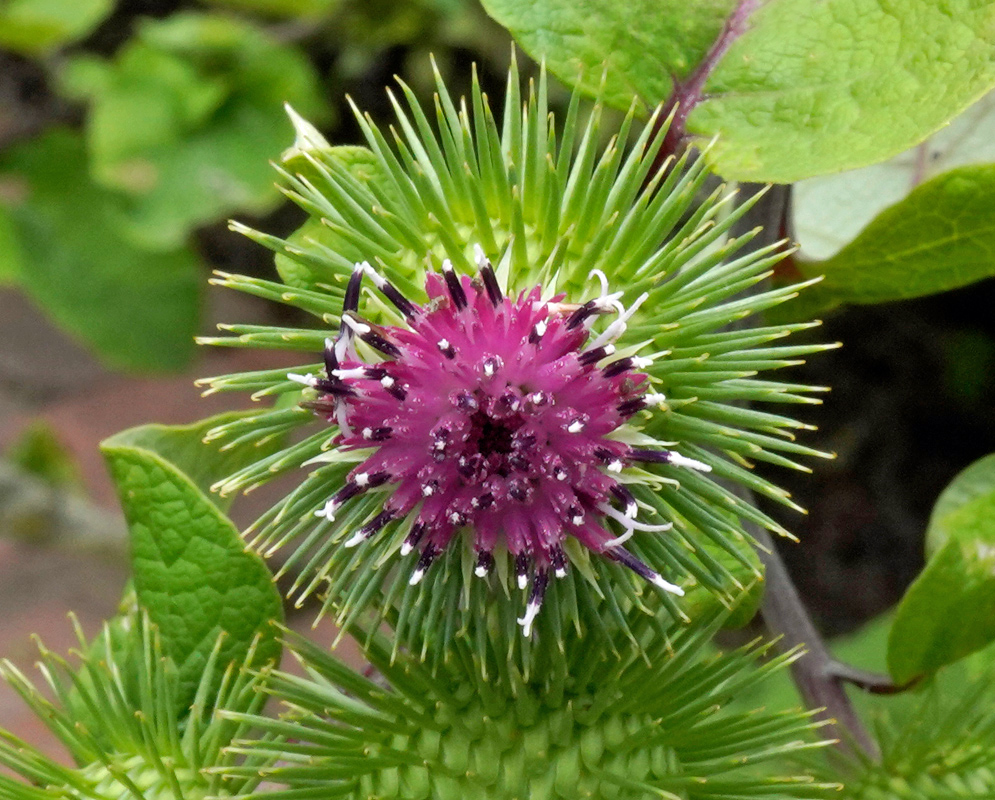This post has 11 Simple Fields-fields attached. Show fields.

Native to temperate regions of Europe and northern Asia and naturalized in North America, arctium lappa, commonly called greater burdock, is a biennial plant often found along roadsides, disturbed soils, and woodland edges. In its first year, it forms a basal rosette and stores nutrients in a thick taproot; in the second year, it sends up tall, branching stems that can exceed 6 ft, producing numerous spherical, bristly flower heads from midsummer to early autumn. Each head is composed of tubular florets, typically magenta to deep purple, surrounded by involucral bracts tipped with hooked spines that attach to fur, feathers, or clothing, facilitating seed dispersal over long distances. The species has long been valued in East Asia, particularly in Japan where the root, known as gobo, is cultivated and eaten as a crisp, earthy-flavored vegetable in stir-fries, soups, and pickled dishes. The roots are harvested in their first year when they can grow 12–24 inches long and ½–1 inch thick. In herbal medicine traditions, the roots, seeds, and leaves have been used for centuries, with validated pharmacological studies confirming compounds that exhibit antioxidant and anti-inflammatory activity; extracts are used in some topical preparations for skin conditions and in certain herbal teas. The hooked burrs of arctium lappa famously inspired the invention of Velcro after Swiss engineer George de Mestral examined how they clung to his dog’s fur. Photographed in Bogota, Colombia.

